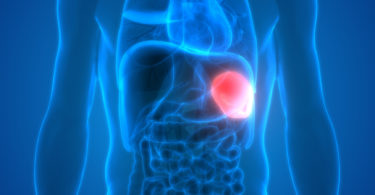Authored by Dr Nahid Siddiqui
Severe acute respiratory syndrome (SARS) is a viral respiratory infection caused by SARS-coronavirus (SARS-CoV).
Clinical features
The initial symptoms are similar to influenza infection. Patients with SARS usually begin with high fever (38°C or above), sometimes associated with chills, rigors, headache, malaise, muscle pain or even diarrhoea. At the onset of illness, some patients may only have mild respiratory symptoms. After a few days, symptoms of lower respiratory tract infection may follow, including cough and difficulty in breathing. In around 10% of patients, the illness may rapidly progress to respiratory failure requiring intensive medical care. Symptoms can be more variable among elderly patients.
Mode of transmission
SARS is predominantly transmitted through close person-to-person contact, via respiratory droplets produced when an infected person coughs or sneezes. Droplet spread can take place when droplets from the cough or sneeze of an infected person are propelled a short distance and deposited on the mucous membranes of the mouth, nose, or eyes of persons who are nearby. The virus can also spread indirectly when a person touches a surface or object contaminated with infectious droplets and then touches his or her mouth, nose, or eyes.
Incubation period
Symptoms usually appear within 2 to 7 days after contracting the disease, but the incubation period can be up to approximately 10 days.
Management
There is currently no specific treatment for the disease. Treatment is mainly supportive.
Prevention
There is no vaccine currently available. Maintain good personal and environmental hygiene remains the most effective way to minimise the risk of contracting and spreading the disease.
1. Maintain good personal hygiene
Perform hand hygiene frequently, especially before touching the mouth, nose or eyes; after touching public installations such as handrails or door knobs; or when hands are contaminated by respiratory secretion after coughing or sneezing. Wash hands with liquid soap and water, and rub for at least 20 seconds. Then rinse with water and dry with a disposable paper towel or hand dryer. If hand washing facilities are not available, or when hands are not visibly soiled, hand hygiene with 70 to 80% alcohol-based handrub is an effective alternative. Cover your mouth and nose with tissue paper when sneezing or coughing. Dispose of soiled tissues into a lidded rubbish bin, then wash hands thoroughly. When having respiratory symptoms, wear a surgical mask, refrain from work or attending class at school, avoid going to crowded places and seek medical advice promptly. Build up good body immunity by having a balanced diet, regular exercise, adequate rest, reducing stress, do not smoke and avoid alcohol consumption.
2. Maintain good environmental hygiene
Regularly clean and disinfect frequently touched surfaces such as furniture, toys and commonly shared items with 1:99 diluted household bleach (mixing 1 part of 5.25% bleach with 99 parts of water), leave for 15-30 minutes, and then rinse with water and keep dry. For metallic surface, disinfect with 70% alcohol. Use absorbent disposable towels to wipe away obvious contaminants such as respiratory secretions, and then disinfect the surface and neighbouring areas with 1:49 diluted household bleach (mixing 1 part of 5.25% bleach with 49 parts of water), leave for 15-30 minutes and then rinse with water and keep dry. For metallic surface, disinfect with 70% alcohol. Maintain good indoor ventilation. Keep windows open to maintain good indoor ventilation; Wash dust filters of air-conditioners frequently; Maintain proper function of the air ventilation. Avoid going to crowded or poorly ventilated public places; high-risk individuals may consider putting on surgical masks while in such places. Maintain proper function of toilets, drains and pipes. U-trap should be prevented from drying up and drain outlets should be disinfected regularly (about once a week). Arrange immediate inspection and repair by qualified technicians if there is a defect in the U-trap or smell of foul air is coming from drain outlets.
Homoeopathic treatment for SARS Homeopaths around the world are on red-alert listening for the symptoms that might guide them to a small group of helpful remedies. At the present time, it is too early to identify such a group as the symptoms being reported are mostly common symptoms that are covered by a large number of remedies.
I searched through the Complete Repertory for the remedies that have the following symptoms in common:
• Sudden onset of symptoms
• High fever with shaking
• Malaise to the point of feeling faint
• Violent cough with pneumonia.
Arsenicum, Belladonna, Eupatorium perfoliatum, and Phosphorus are the four remedies that have each of these symptoms.
Arsenicum has the most weakness to the point of prostration, with terrible anxiety and restlessness. Belladonna has the highest fever: a burning, dry heat with no perspiration and no thirst.
Eupatorium has the most (violent) shaking as well as terrible pains in the bones and joints and a violent cough that makes the head hurt. Phosphorus has pneumonia with a terrible, dry cough and purulent, green and/or bloody expectoration.
Aconite and Ferrum phosphoricum are possibilities in the early stages of this disease—only in the first 24 hours of the fever before other symptoms have developed. (See Homeopathy Today, 29 June 2020 “Ferrum phosphoricum; still vague after all these years” and “Research and rediscovery of a cherished remedy.”)
The mortality rate for SARS is running at 4–5% which means 95–96% of people are recovering. This may be a serious epidemic that is flexing its muscles or hopefully it will be something that fizzles out in the coming weeks or months. Either way let’s use this time to remember how “lucky we are to have homeopathy in our lives.”
About author:
Dr Nahid Siddiqui a homeopath Admin of ‘Homoeopathy our mission’. She has been editor reserch in female genitalia disorders contribution last five years till on. She also want spread homoeopathy or motivation for among students who want develope skill in homoeopathy field.





